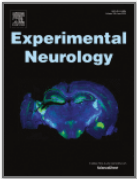 Charcot-Marie-Tooth type 2A (CMT2A) peripheral neuropathy, the most common axonal form of CMT, is caused by dominantly inherited point mutations in the Mitofusin 2 (Mfn2) gene. It is characterized by progressive length-dependent degeneration of motor and sensory nerves with corresponding clinical features of motor and sensory impairment. There is no cure for CMT, and therapeutic approaches are limited to physical therapy, orthopedic devices, surgery, and analgesics.
Charcot-Marie-Tooth type 2A (CMT2A) peripheral neuropathy, the most common axonal form of CMT, is caused by dominantly inherited point mutations in the Mitofusin 2 (Mfn2) gene. It is characterized by progressive length-dependent degeneration of motor and sensory nerves with corresponding clinical features of motor and sensory impairment. There is no cure for CMT, and therapeutic approaches are limited to physical therapy, orthopedic devices, surgery, and analgesics.
In this study the authors focus on histone deacetylase 6 (HDAC6) as a therapeutic target in a mouse model of mutant CMT2A. They report that these mice display progressive motor and sensory dysfunction as well as a significant decrease in α-tubulin acetylation in distal segments of long peripheral nerves. Treatment with a new, highly selective HDAC6 inhibitor, SW-100, was able to restore α-tubulin acetylation and ameliorate motor and sensory dysfunction when given either prior to or after the onset of symptoms. To confirm HDAC6 is the target for ameliorating the CMT2A phenotype, the authors show that genetic deletion of Hdac6 in CMT2A mice prevents the development of motor and sensory dysfunction.
These findings suggest α-tubulin acetylation defects in distal parts of nerves as a pathogenic mechanism and HDAC6 as a therapeutic target for CMT2A.
